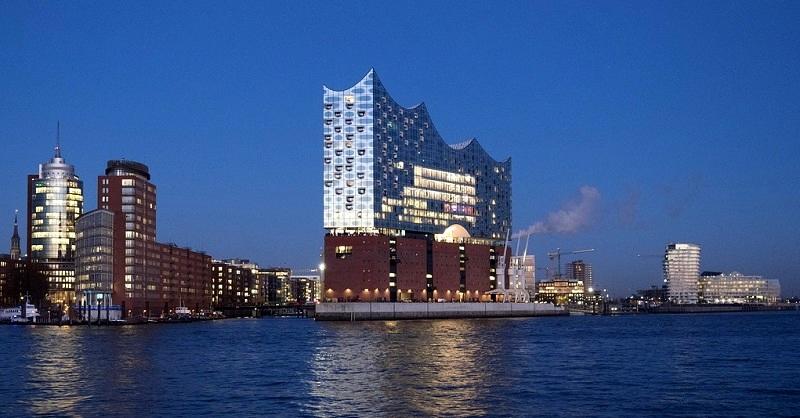Destination branding and sustainability are becoming more and more important in Germany, tells us Petra Trimborn in this interview. She also shares her thoughts on the difference between place marketing and branding, which rankings German destinations use to measure their brand performance, and the main challenges destination managers and branders are facing.
Learn about:
- How sustainability performance impacts the reputation and competitiveness of destinations;
- How place branding differs from -marketing;
- How the Elbphilharmonie is adding value to Hamburg’s city brand;
- Which trends and challenges German destinations, cities and regions are facing;
- How places in Germany measure the success of their branding activities;
- Which regions and destinations in Germany are the most successful in branding.
Petra, do you remember what first attracted your interest in the branding and reputation of places, such as tourist destinations?
My background from my studies is tourism geography combined with marketing and regional planning. From the very beginning of my studies I looked at tourism as a tool for development, no matter what region we are talking about. Already in the late 80s we were discussing so called landmarks, which are an outstanding symbol for a place.
My first position as Marketing Assistant Europe for the EU-funded Caribbean Tourism Development Programme focused on the positioning and marketing of the Caribbean in major European source markets. Already at that time we were focusing on the outstanding specialities (spices, music, landscape, beaches) of the Caribbean and used them as a tool for branding the region and making it known to the European traveler.
After years of consulting work I started my sponsored PhD in destination branding and its evaluation. My partner from the professional side was the German representation of Turespaña. During these years of PhD research I concentrated on different issues to do with destination branding and looked not only at German research and destinations. Even more of interest to me was the international community.
I truly believe that the holistic concept of branding can help regions and cities (and places in general) to position themselves in the tourism market, but we have to be honest – not every place can be a brand.
Now I am in charge of the annual Destination Brand Study led by our consulting company, inspektour, which evaluates approximately 170 German tourism destinations in the German source market.
Finally I would like to mention that for eight years now I have been living in the city of Hamburg and just a few weeks ago the new “Elbphilharmonie” concert hall was opened. The location of the “Elbphilharmonie” adjacent to the harbour, the outstanding architecture and of course the acoustics of the concert halls is the new landmark of Hamburg.
In the last few years Hamburg has had a steady growth in tourism arrivals and overnight stays, but now with this new landmark Hamburg will gain much more attention on an international level.

As a professional with a strong background in sustainability, what role do you think sustainability plays with regard to the reputation of places – cities, countries, destinations?
Sustainability should be integrated in the development and management of places. Just this year the United Nations declared 2017 the “International Year of Sustainable Tourism for Development.”
A carefully planned development of a region or place is the basis for successful branding.
What is most necessary is that local stakeholders (e.g. accommodation, restaurants, and leisure facilities) need to participate because these are the points of contact where the guests experience the moment of truth.
As a destination manager you need to first have movers and supporting politicians in your team; they will make the first moves and work as an example for others. A destination manager on his or her own cannot implement sustainability successfully.
Careful development (ecological, cultural, economic, social, educational, regional-minded, cooperative) combined with place branding will strengthen the place and its identity. Also branding should be transparent and it is necessary to be honest as a manager and communicator.
Product development should start with building up a strong identity which is rooted in the history and present of the place. Therefore the integration of the population and stakeholders is necessary and this participation is also something which forms part of sustainability. These so called bottom up processes have to be well-managed.
In your view, what is place branding all about? And how do you distinguish between branding and marketing?
In my view branding is about long term planning and implementation. It takes time to build up a brand and it requires sufficient budgets. Also we have to be honest that not every place on earth can be a brand. Sometimes there is a lack of natural or cultural resources or/and the region does not have sufficient financial resources.
According to Simon Anholt, place branding is a proverbial supertanker: it takes five miles to slow down and ten miles to change course. That’s why it is necessary to hold on to your long term plan, unless significant circumstances force you to change the branding strategy (e.g. the current situation in Turkey).
Place branding requires budget allocation and thinking in bigger units; it is – compared to marketing – more holistic and definitely not just about developing a logo.
Marketing talks about the seven Ps (price, product, place, promotion, people, process and physical evidence) and includes market research, as well as work with key performance indicators. From my point of view, marketing is less intrinsic and less bottom up. Too often the focus is mainly on communication issues and less on the place as a whole. Finally, marketing is more short term orientated.
In many cases, marketing concentrates on plain image building and with a flexible price strategy it can ruin the place.
Which trends and challenges do you observe as a consultant with regard to the branding and sustainability of destinations, for instance in Germany?
Working as a consultant for many years and being with inspektour now I think I have a good insight into the German tourism market, especially as inspektour’s focus to date is on German destinations.
A big issue in the years to come will be the financial strength of destinations, and destinations without financial resources will lose ground in an environment of ever intensifying competition.
Even if at the moment many Germans prefer to stay in their own country for their vacations (due to political unrest in some regions of the Mediterranean), in the long term these destinations will recover and Germans will change their travel behavior again.
From my point of view, I would say that in the future there will be ten truly international destinations in Germany. Metropolitan areas will attract more international attention. General trends and movements, such as digitalization, the sharing economy, SMART-products and new mobility concepts, will be realized in these regions first. On the other hand rural areas will get more domestic tourism.
Another thought is that Germany will remain a fairly safe tourism destination.
New concepts will develop and more and more social start ups will help to green the tourism business. In general I would say that for Germany sustainability is affordable, and if a destination such as Germany does not have the sufficient resources then who else does?
Destination branding has been a hot topic in Germany for the past few years. Destinations in the USA, Australia and New Zealand were the first movers. What is happening now in Germany is that each destination wants to become a brand, but as I mentioned before, not every single destination has the potential to be a brand.
Sustainability is a much older topic in Germany. It came up at the end of the 70s along with the green movement and later the Green party – and at that time focused mainly on ecological topics. The first national parks in Germany were set up in the late 70s.
There is now a degree of frustration among destination managers in connection with the topic of sustainability. One major debate is about ‘green-washing’ and where to start with sustainability; the questions of how much it costs and how long it takes also have to be answered.
But for more and more destinations sustainability thinking is necessary, as it is also the key condition for public funding (for local, regional, national and EU funding).
How can place branding practices support the sustainable development of destinations? Where’s the link?
Branding and sustainability management go hand in hand. Both concepts should start with the identity of a place (nature, people, culture) and integrate the people of the place.
Furthermore, it is a requirement for both branding and sustainability to be transparent in their processes, to have a long term orientation in planning and implementation and to have a certain amount of financial resources available. Branding and sustainability management are not for free. But in the long run “healthy” destinations will be established and managed.
How to measure the success or effectiveness of place branding programs?
On a national/country level, the main place brand ranking used in the German market is the annual Anholt-GfK Nation Brands Index. Our national tourism office (Deutsche Zentrale für Tourismus) uses this tool in order to determine the position of Germany as a tourism destination internationally.
For cities, the “Stadtmarken Monitor Deutschland” by Brandmeyer Markenberatung offers valuable insights.
And as I already mentioned, there is also the Destination Brand Study, which inspektour consultancy carries out since 2009. This study covers 170 destinations and is based on online interviews with 17,000 German residents.
Having grown up in the Southern German state of Baden-Württemberg and worked/lived in Northern Germany for the last years, are there any significant differences in how regions or destinations approach their marketing and branding?
Growing up in the northern part of Baden-Württemberg, I was surrounded by well-known destinations, such as Heidelberg and the Black Forest – both of these are internationally recognized destination brands, along with Munich and Rothenburg ob der Tauber.
Having studied Tourism Geography in Trier, and worked as an international consultant based in Frankfurt (with projects in the Caribbean, Croatia and Cuba among others), I can say that southern Germany seems to me a step ahead in discussing and integrating branding and sustainability in planning and development. Big car manufacturers in southern Germany are long-standing examples of successful international branding.
In northern Germany there are specific regions that have done an excellent job in branding, such as the islands of Sylt or Norderney. In terms of sustainability, some prime examples are the island of Juist and the Wattenmeer National Park.
3 books everyone interested in destination branding and/or sustainable tourism should read…
- Simon Anholt (2010): Places. Identity, Image and Reputation
- Hans Georg Häusel (2014): Brain View. Warum Kunden kaufen
- Rein, H.; Strasdas, W. (2015): Nachhaltiger Tourismus
Thank you, Petra.
Connect with Petra Trimborn on LinkedIn.
Enjoyed our interview with Petra Trimborn of inspektour consultancy, on destination branding and sustainability in Germany? Share and spread the word!


